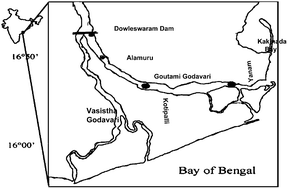Impact of salinity and pH on phytoplankton communities in a tropical freshwater system: An investigation with pigment analysis by HPLC†
Abstract
An in vitro study was carried out to understand the effects of salinity shock and variation in pH on phytoplankton communities in a tropical freshwater system of the Godavari River (a major peninsular river in India). The distributions of, and variations in, phytoplankton communities were assessed by quantitative determination of their class specific marker pigments, using


 Please wait while we load your content...
Please wait while we load your content...